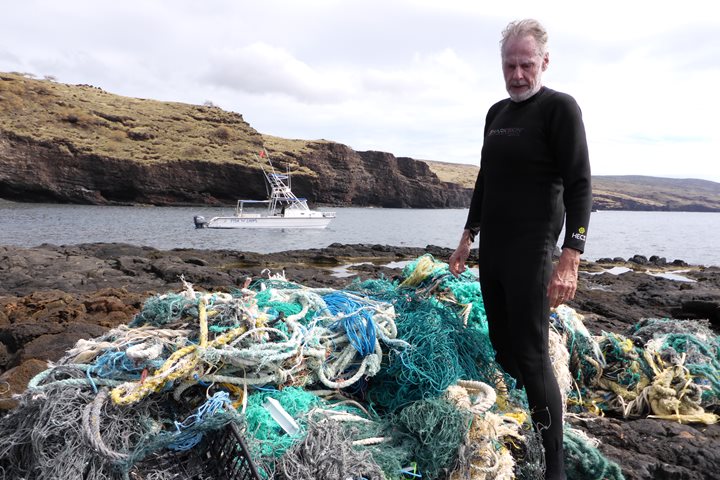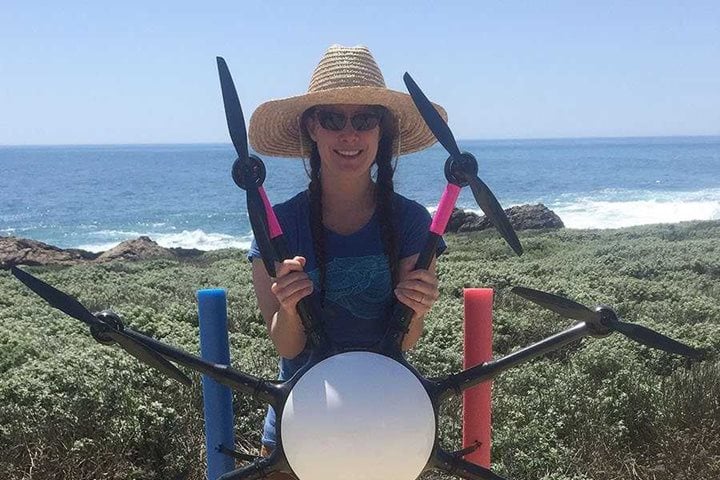Call +1.800.397.3348 or contact your travel advisor
- WorldView
- 5 Min Read
- 18 Apr 2019
How Lindblad Guests are Impacting Research Initiatives Through Citizen Science
Passive travel is so passé. Increasingly, travelers are looking for experiences that are active, adventurous, and eco-friendly—think ecotourism and voluntourism. Lindblad Expeditions' Citizen Science trips swirl all of these elements together in the form of small-ship explorations that encourage the engagement of travelers with onboard scientists as they assist with research and visit pristine places worldwide. Get Inspired By Photos, Videos, Webinars, Stories, And Exclusive Offers. Sign Up
Jimmy White, PhD, is the marine biologist who has led Lindblad’s unique Citizen Science trips since they were introduced in 2018. The Australian’s research into the value of marine-protected areas for shark and ray conservation in the Great Barrier Reef has been internationally recognized. He’s also tagged whales with satellite transmitters in the ocean depths, tracked tigers in the Sumatran jungle, swum with seals in the South Seas, and unearthed vipers in the Middle East.
Jimmy's work with award-winning documentary teams from the BBC, Discovery Channel, and National Geographic have inspired viewers in the same way that he now gets travelers excited on Lindblad’s Citizen Science expeditions. These trips combine adventure, scientific discovery, and a quest for species conservation and environmental protection on multi-week voyages. They result in transformative experiences and memories for all on board.
Here, Jimmy discusses the status and progress of Citizen Science travel.
Why is Citizen Science travel on the rise?
People are choosing to travel to remote destinations more than ever because they’re seeking a deeper connection to the wild that goes far beyond just visiting. They want to truly understand these places and conserve them for future generations. Citizen Science aligns perfectly with expedition travel because it assists scientists with data collection on animals and their habitats in the most remote locations on earth. The participation of travelers helps scientists access and cover the costs of reaching these destinations.
How do Citizen Science travelers make positive contributions?
The Lindblad Expeditions-National Geographic Fund and Pristine Seas project, driven by guest donations, have spearheaded our stewardship of the marine environment since 2008. These funds have supported marine conservation globally. But, with Citizen Science expedition travel, we are asking for something much more valuable than a financial contribution. We’re asking people for their time and attention. We are asking them to volunteer, collaborate, and contribute on large, sometimes global projects. This creates opportunities for them to meaningfully contribute to the understanding of the environments we visit. It’s a deeper level of engagement, and the memories created are moving and reach far beyond a financial donation.
How successful were Lindblad’s 2018 Antarctica, South Georgia & the Falklands expeditions for Citizen Scientists, which launched the Citizen Science BioBlitz program?
The 3,700 images captured per BioBlitz is one way to quantify it, but its true success is more nuanced. Success for me was witnessing travelers on South Georgia Island on their hands and knees photographing lichens, mosses, and skua scat with 100,000 king penguins surrounding them and a pair of four-ton elephant seals dueling behind them. It was the sense of pride I saw in family members as they submitted their work to be used for the long-term conservation of South Georgia’s unique ecosystem. This is holistic success, because it connected people back to the wild, contributed to science, and aided in conservation.
Will this success inform future trips?
The program will be global in 2020, with a range of projects that look at humpbacks in Alaska, sharks in the South Pacific, and micro-plastics off the Antarctic Peninsula. We’re exploring new regions with our fleet while continuing to evolve existing itineraries to create new opportunities to collaborate with researchers around the world.
Are all ages welcome?
Our Antarctica, Alaska, Galapagos and South Pacific itineraries lend themselves well to families, as these are deep learning opportunities for both adults and children. Experiential learning is the cornerstone of developing a lifelong curiosity about the natural world, and it can start aboard our vessels. There is no better classroom than being in the field with subject-matter experts.
Where have Lindblad’s Citizen Science expeditions had the greatest impact?
Our BioBlitz surveys on South Georgia Island are quantifying the entire biota, so that’s establishing a baseline of species diversity for the entire ecosystem, which can then be followed up with regular monitoring by Citizen Scientists. Long-term, this can stave off environmental disaster by detecting and eradicating introduced species before they can disperse.
In what other ways are they making a difference?
We’re creating long-term, sustainable projects that produce scientifically valid data. A criticism of Citizen Science programs has been that project design flaws and compromises in data collection ultimately make the results unusable by scientists. But by bringing together the best scientists, explorers, and photographers—and working with a network of universities and NGOs—we are avoiding that problem. It’s not a quick or easy process, but already, interpretations of our data are being successfully incorporated into conservation and management strategies for species and their environments. It’s truly contributing to the preservation of our environment and our understanding of the changing planet.
Citizen Science projects are featured on Lindblad Expeditions in South Georgia & the Falklands (Oct. 23, 2019 and March 6, 2020 departures) and Antarctica, South Georgia & the Falklands (Nov. 7 and 19, 2019 and February 15 and 17, 2020 departures).



